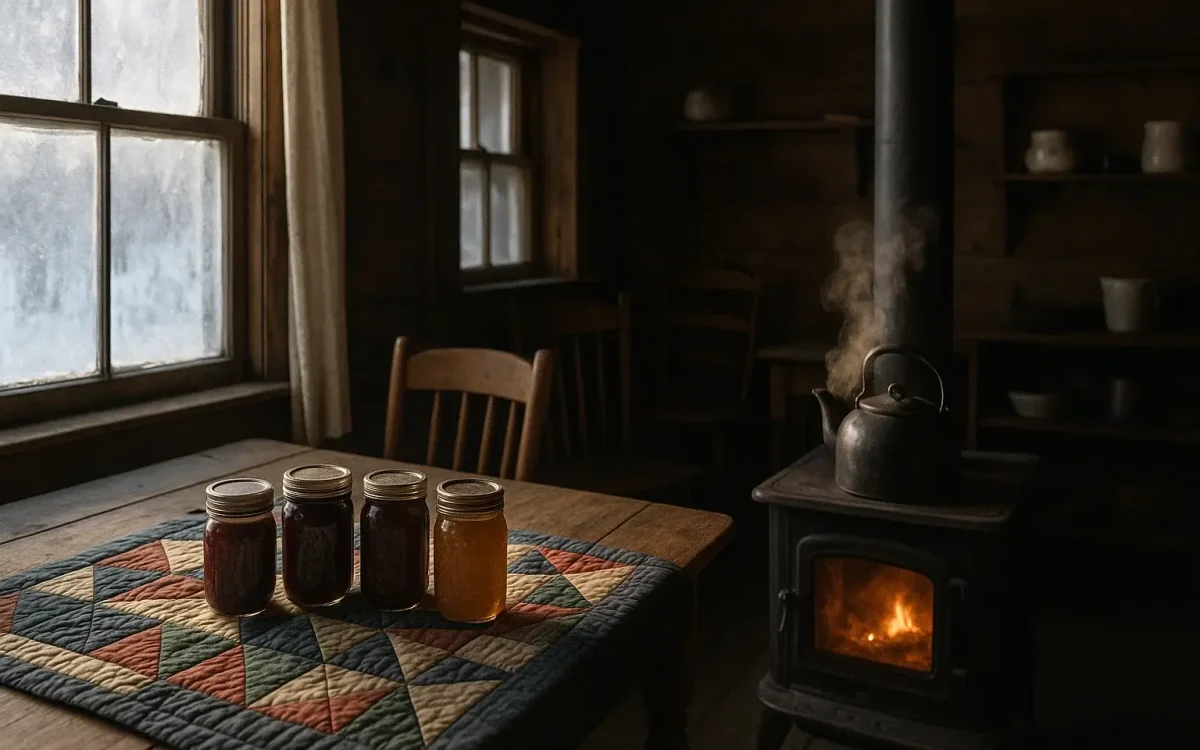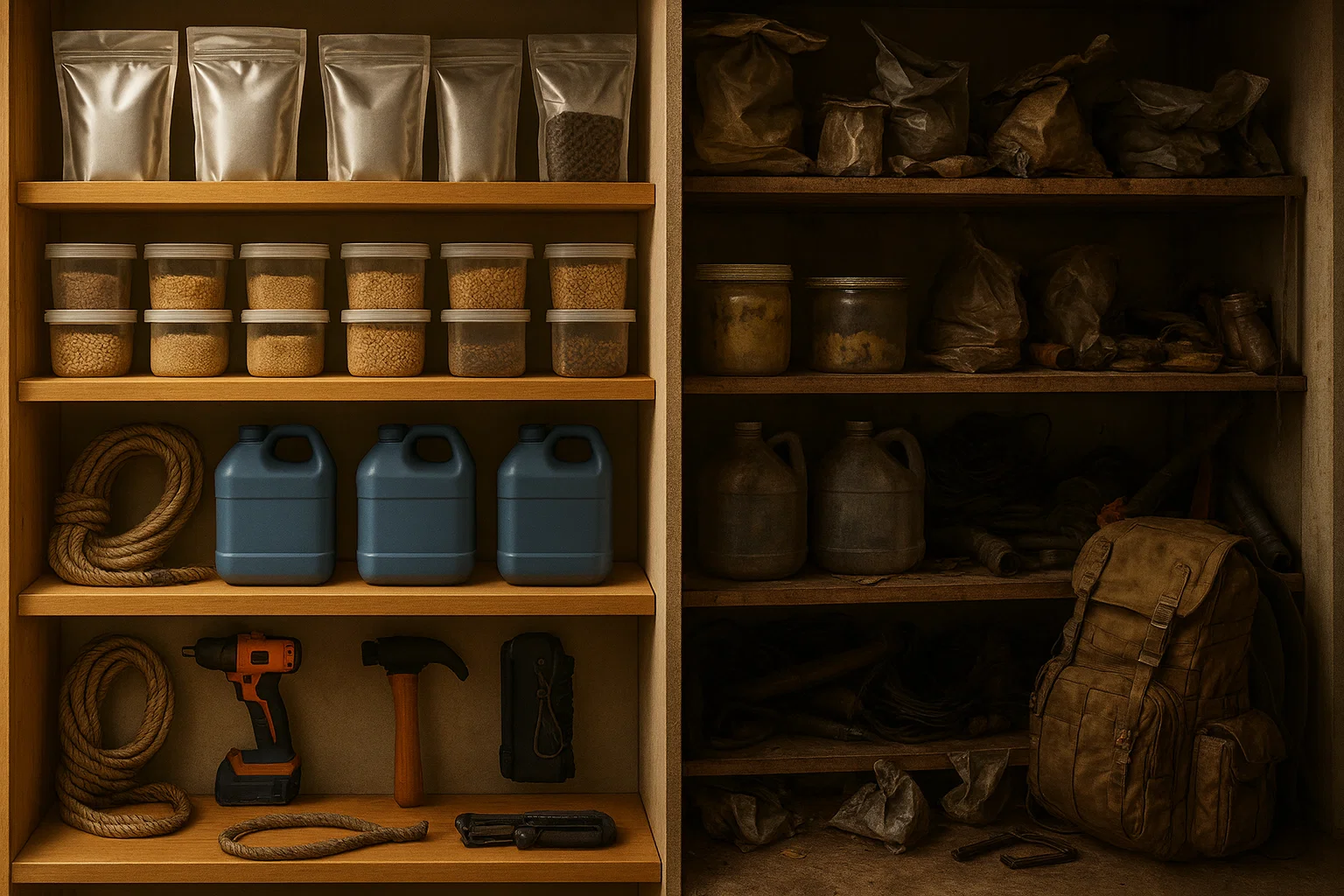Most folks today face winter by cranking up the heat and ordering in. But deep in Amish country, families handle the cold in a completely different way, no thermostat, no internet, no panic. Just wood, work, and faith.
While the rest of us depend on comfort and convenience, the Amish rely on preparation and routine. Their entire lifestyle is built around surviving every season, not just enduring it.
This isn’t about nostalgia or curiosity. It’s about Amish winter survival, a mindset and skill set refined over generations of living off the grid.
Here’s what a single January morning inside an Amish home can teach us about staying warm, self-reliant, and steady when the world outside freezes solid.
Lesson 1
If you step into an Amish home in January, you’ll notice one thing right away, the wood stove runs the show. It’s the center of the house, the place where everyone cooks, eats, and warms up. The rest of the home? Often kept closed off to save fuel and trap heat where people actually live.
The Amish don’t try to heat every room. They focus on the spaces that matter and use simple tricks to hold warmth, thick rugs on the floors, heavy curtains, and even quilts hung over doorways to stop drafts. It’s a system built on logic, not luxury.
Most of us waste heat chasing comfort in every corner of the house. The Amish do the opposite, they concentrate comfort. It’s a lesson any prepper can use: keep your heat source central, limit open space, and control airflow. You’ll burn less fuel and stay just as warm.
Did You Know? Amish homes often stay around 60°F in winter. Comfort comes from layers, not high temperatures.
Lesson 2
Amish winter clothing isn’t about fashion, it’s about function. They layer natural fabrics like wool, linen, and flannel because they breathe, insulate, and stay warm even when damp. Every piece has a purpose, from thick socks to hand-knit shawls that trap body heat where it counts.
Most people think “warm” means thick, but the Amish think in zones, core, hands, and feet. Keep those areas protected and you’ll handle the cold with less bulk. Skip the synthetic stuff that traps moisture and chills you faster. Natural fibers don’t just keep you warmer; they help your body regulate itself like a built-in thermostat.
Lesson 3
In an Amish kitchen, the wood stove does more than heat the home, it feeds it. A pot of stew might simmer for hours while fresh bread bakes in a heavy iron oven. The smell alone feels like warmth. Around the stove, jars of canned vegetables and fruit line the shelves, proof of months of planning ahead.
Every meal pulls double duty. Cooking keeps the house warm and stretches ingredients over several days. A thick soup reheated for lunch doesn’t waste fuel or food, it’s just smart living. Nothing fancy, nothing wasted.
That’s the Amish approach to winter: steady, efficient, and satisfying. Each bite comes from their own shelves, not a store miles away.
Field Tip: Cook in bulk. Soups and stews reheat easily and conserve fuel, just like the Amish do through long winters.
Lesson 4
Winter doesn’t surprise people who plan for it. Long before the first frost, jars start filling the pantry, tomatoes, beans, meats, and fruit, each one sealed tight for the months ahead. Canning, smoking, and drying aren’t special projects; they’re part of the rhythm that keeps a household steady when everything outside slows down.
Step into a root cellar in January and you’ll notice the quiet order of it all, rows of jars, baskets of potatoes and apples, a chill in the air that keeps everything fresh without a single watt of power. It’s simple, efficient, and it works.
Every jar sealed in August is a meal earned in January. That kind of preparation turns winter from a threat into just another season.
Lesson 5
Cold months bring a slower pace, but that doesn’t mean downtime. When field work stops, hands turn to the small but essential jobs, fixing harnesses, sharpening tools, patching clothing, and quilting by lamplight. Every repair made in January saves time and money come spring.
Survival isn’t just about building new things; it’s about keeping what you already have in working shape. A sharp blade, a mended coat, or a tuned-up lantern can make the difference between comfort and struggle. Winter gives the time to do it right.
Field Tip: Make a winter checklist for maintenance, gear, clothing, tools. A few hours of repair now saves you from big problems later.
Lesson 6
Daylight sets the rhythm when you don’t depend on power. Work starts with the sunrise and winds down when the light fades. Evenings are slower, time for small chores, reading, or rest, not endless hours under bright bulbs.
Relying on daylight builds discipline and calm. Try adjusting your routine to match it: wake earlier, cut screen time after dark, and keep lights minimal. You’ll save power and sleep better, just like generations who lived by the sun long before us.
Lesson 7
For the Amish, winter is as much a spiritual season as a physical one. Days are shorter, work slows down, and faith fills the quiet. Daily prayer, Bible reading, and simple gratitude keep anxiety in check and give every day a sense of order.
It’s a reminder that survival isn’t only about food or heat, it’s about mindset. The Amish handle isolation and hardship with calm because they trust the work they’ve already done.
Lesson 8
Amish homes stay warm in more ways than one. Quilts stitched by hand, thick wool socks, and solid wooden furniture bring a kind of comfort that lasts longer than anything you can buy. These things aren’t just useful, they carry the time, care, and patience it took to make them.
Modern life chases convenience, but real comfort comes from effort. The Amish prove that warmth isn’t plugged in or delivered, it’s built, stitched, and shaped by hand over time.
Lesson 9
When the cold sets in, no one in an Amish town faces it alone. Neighbors share firewood, trade canned goods, or lend a hand when someone falls behind. Barn raisings might pause for winter, but the spirit behind them doesn’t. Helping each other isn’t charity, it’s survival done right.
In cities, isolation makes people weaker during hard times. Everyone minds their own business until something breaks. In Amish communities, connection is part of the plan. They know that strength grows when people depend on one another instead of systems that can fail.
That’s a lesson worth keeping. No prepper can go it completely alone. Build your own safety net, family, friends, neighbors, and treat community as one more layer of preparedness.
Did You Know? Amish families often split and stack firewood for elders or widows first, survival is a shared responsibility.
Lesson 10
Amish winter preparedness doesn’t start in December, it starts months earlier. Wood is split in summer, shelves are stocked in fall, and tools are repaired long before the first freeze. When the snow hits, there’s no rush, no panic, just routine.
That kind of steady planning keeps life predictable when everything else turns unpredictable. It’s the quiet work no one sees that makes the biggest difference when conditions get tough.
Preppers can take the same approach: prepare when it’s easy so you can rest when it’s hard. Real survival isn’t about reacting fast, it’s about never having to.
Outside, snow still drifts across the fields. Inside, the fire burns steady, and a family sits close, talking quietly, mending clothes, or reading by lamplight. Nothing about it feels rushed. Everything they need is already within reach.
The Amish survive winter not through gadgets or luck, but through rhythm, foresight, and faith. They prepare early, live simply, and trust the systems they’ve built by hand. It’s a reminder that real security doesn’t come from technology, it comes from consistency.
Maybe the warmth we crave most isn’t from the stove, but from simplicity itself.
If you’d like to learn the old-world methods that keep Amish families self-reliant year-round, take a look at The Amish Ways, a guide inspired by generations who lived without fear of winter.
The Video Every Prepper’s Talking About:




























